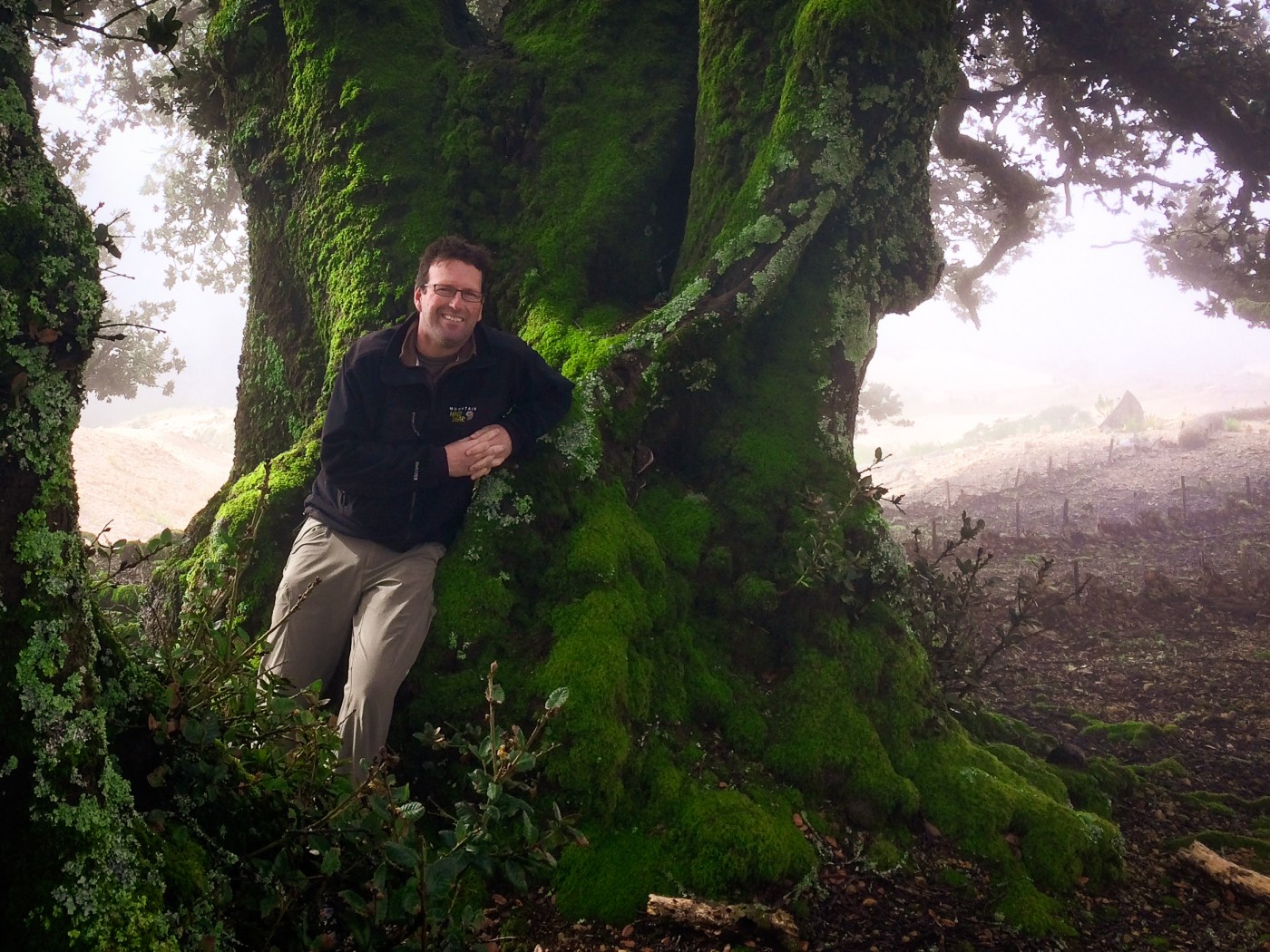Ecologist Michael Kauffmann knows Dr. Seuss’s book “The Lorax” by heart. But he doesn’t identify, exactly, with the book’s namesake orange critter who, raging against the Truffala Tree-trashing Once-ler, declares that he speaks for the trees.
Related Articles
As labor costs rise, AI is learning to farm
Trump revokes California’s electric vehicle rules
Santa Cruz City Council votes to ban sale of filtered cigarettes
All Yosemite campgrounds open this summer for the first time in 6 years
EPA moves to repeal rules that limit greenhouse gas emissions from US power plants
“The Lorax just yells at everybody about how bad they’re doing,” says Kauffmann, who used to read “The Lorax” to school groups when he taught environmental education. “The Once-ler made some mistakes but in the end he realized, ‘Gosh darn it, there is hope for the future,’ and he throws some seed down. Maybe I’m half Lorax and half Once-ler.”
Still, Kauffmann certainly speaks for the trees. He and Cal Poly San Luis Obispo botany professor Matt Ritter have just published a comprehensive field guide called California Trees, containing photos, range maps, and science data, and illuminating relationships between trees and their environments, the shaping of cultures by trees, and current conservation efforts. All 95 of the state’s native tree species are covered, including California endemics not found elsewhere — the Santa Cruz cypress, for example — as are top destinations for observing them.
California’s iconic trees are so well appreciated, Kauffmann notes, that three national parks are named after them: Redwood, Sequoia and Joshua Tree.
“We have the tallest tree on the planet and largest — the tallest is the redwood and the largest is the sequoia,” Kauffmann said. “We also have the oldest living thing on the planet, which is the bristlecone pine. They live to about 5,000 years.”
This news organization spoke with Kauffmann, who lives near Eureka in Humboldt County, about where to find fascinating trees in the Bay Area — the top of Mt. Tamalpais, for example — and around the state, and about relationships between indigenous peoples and trees, communication among trees, and more. The interview has been edited for length and clarity.
Q: What tree attractions in and around the Bay Area should everyone see?
A: Everyone knows about Muir Woods. You can drive pretty easily to get to Mariposa Grove in Yosemite. Those are the two all-star destinations. There are also some interesting spots both north and south of the Bay Area. Robert Louis Stevenson State Park in Napa County is a real hot spot for tree diversity (with) the most California endemic trees in the state. South of the Bay Area, there are a couple of hot spots, and the main one is Point Lobos, south of Monterey — there’s a bunch of endemic trees there, like the Monterey cypress and the Gowan cypress. Just south of there, there’s a fir that grows nowhere else in the world, in the Santa Lucia Mountains, called the Santa Lucia fir. There’s some really spectacular trees at the top of Mt. Tam, including the cypress trees that grow on the serpentine. There are a lot of cool flowering trees also.
Q: What other tree attractions in California should everyone see?
A: There are the three national parks named after trees. One interesting spot down near San Diego is the Torrey Pines State Natural Reserve. That’s the second rarest pine in the world. It only grows outside of San Diego and in Channel Islands National Park. California sycamores are in the Santa Monica Mountains and also the southern California black walnut, which is another California endemic tree.
Q: What California tree species do you find particularly impressive?
A: Definitely the oaks. California is renowned for its oaks. You can find some of the most spectacular groves of oaks in the world in California. We definitely have at least one of the largest oaks in the world in the canyon live oak. They get close to a 40-foot circumference. The largest oak in California is currently in the San Bernardino mountains. I’ve measured a couple that are very close to that size. One is in the San Gabriel Mountains and it may have burned last summer, and another is in Humboldt County that I found up here.
Q: Where are good places to see nice oaks in the Bay Area?
A: You can see canyon live oak south of the bay. You can see them in the Santa Cruz mountains. Coastal live oak extend from about Marin County south to San Diego County. They’re pretty thick throughout the elevations and ranges in the Bay Area.
Q: Did you learn anything surprising about trees while researching for this book?
A: I’m becoming a better interpreter of traditional uses before European arrival, and the first peoples’ relationship with a lot of these trees. Here in the Klamath Mountains along the rivers are white oaks and sometimes black oaks. Those were village sites. These (forest areas) were all tended. Just understanding those deep-time relationships between people and trees has been eye opening for me.
Q: Science is now revealing to us how trees communicate via fungal networks — can we see the effects of that?
A: We’re just on the tip of the iceberg. You can try looking for patterns in trees where maybe there’s bark that’s similar, maybe there are similarities in flowering — those are maybe signs that these trees are talking to each other.
Q: Nature is taking a hit from climate change on virtually every front — what do you worry about with trees?
A: In my lifetime the most devastating reality was in 2020 when we lost 20% of our giant sequoias in those series of fires — they basically obliterated many of the southern-most groves of giant sequoias. Just witnessing those sort of events, the shifting of our forests away from those that had been well managed for thousands of years by the first peoples, and then those that were just cut and replanted. That was the fate of the giant sequoias. The sequoias themselves weren’t necessarily unhealthy but the forests under them were. They had 100 years of firs growing back where the Miwok people 100 or 150 years ago were burning those forests for biodiversity and to create openings for hunting. There are a lot of positive things that are happening … thoughtful research that’s providing stewardship and a lens for the future of trees in California.
——————————
Name: Michael Kauffmann, co-author of California Trees, published by Backcountry Press
Age: 51
City of residence: Kneeland, in Humboldt County
Birthplace: Virginia
Education: Bachelor’s degree in biology/chemistry from Virginia Tech; Master’s degree in biology/biological sciences from Humboldt State University
Family status: married with two sons, 6 and 13
——————————
Five things about Michael Kauffmann:
1. Favorite place: Klamath Mountains
2. Favorite hike: Bigfoot Trail
3. Favorite hobby: Exploring natural wonders with my family
4. Favorite book: “Desert Solitaire” by Edward Abbey (“The Lorax” second)
5. Best four months of my life: Hiking the Continental Divide Trail in 2002





